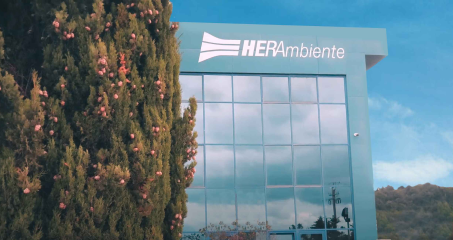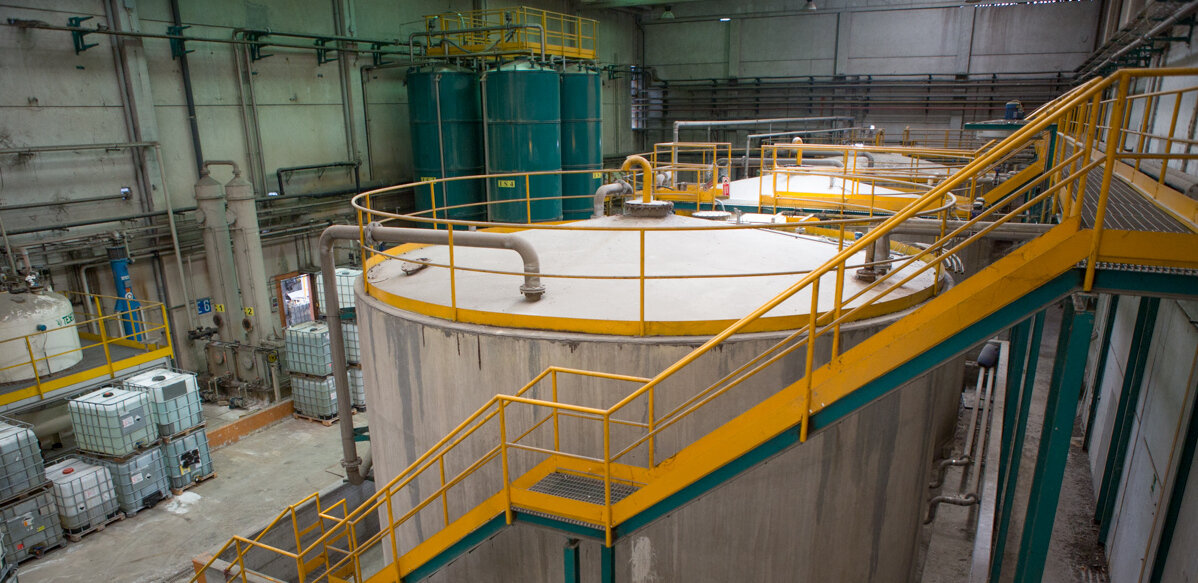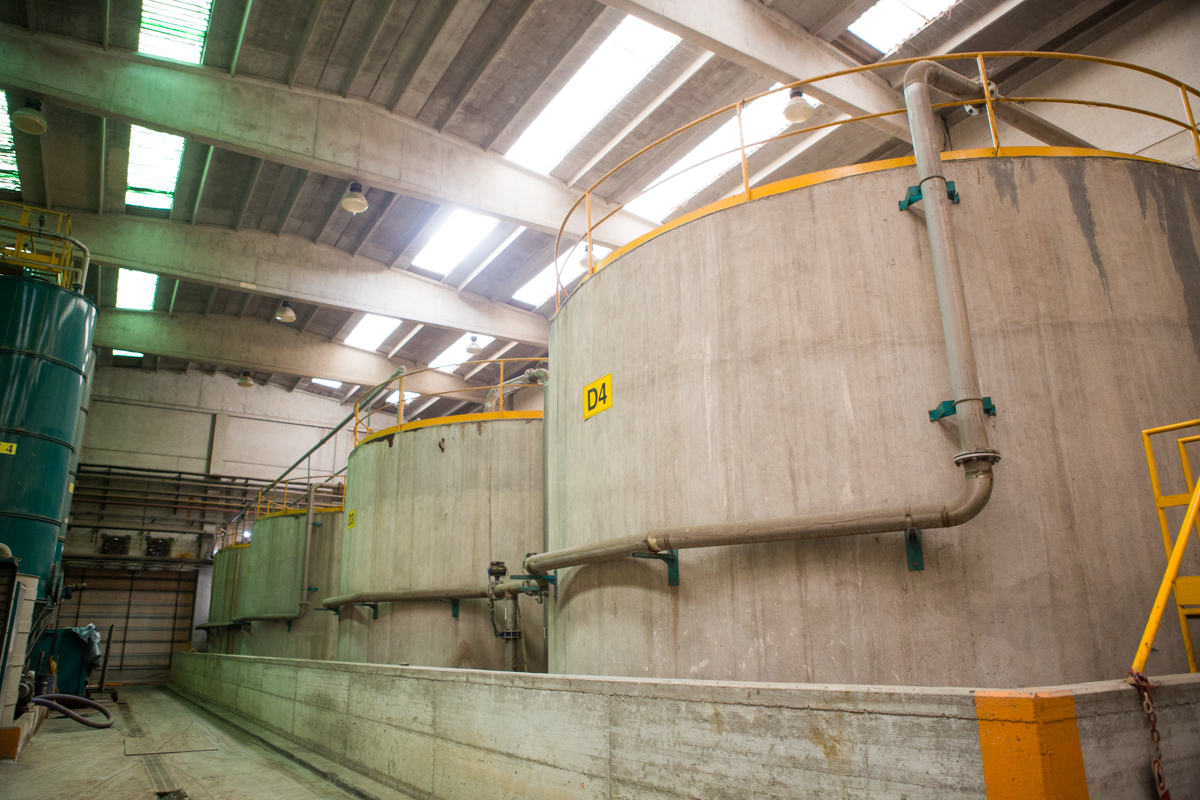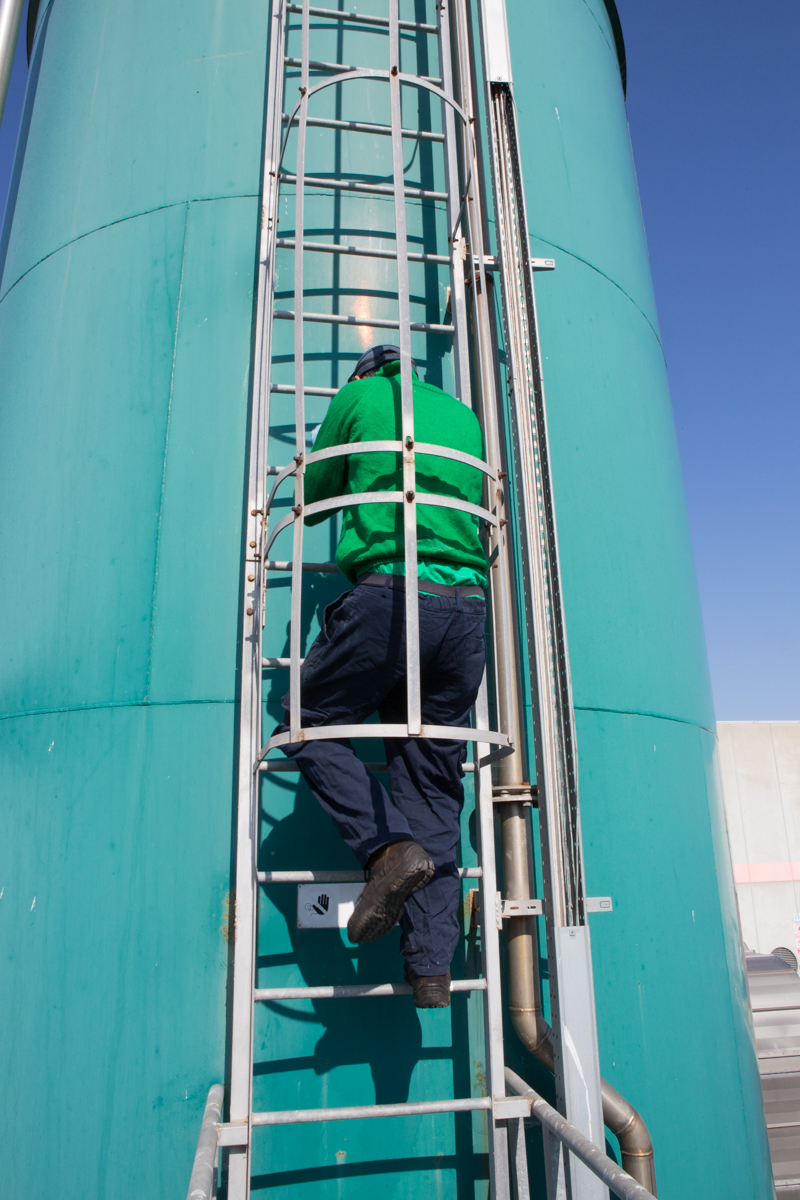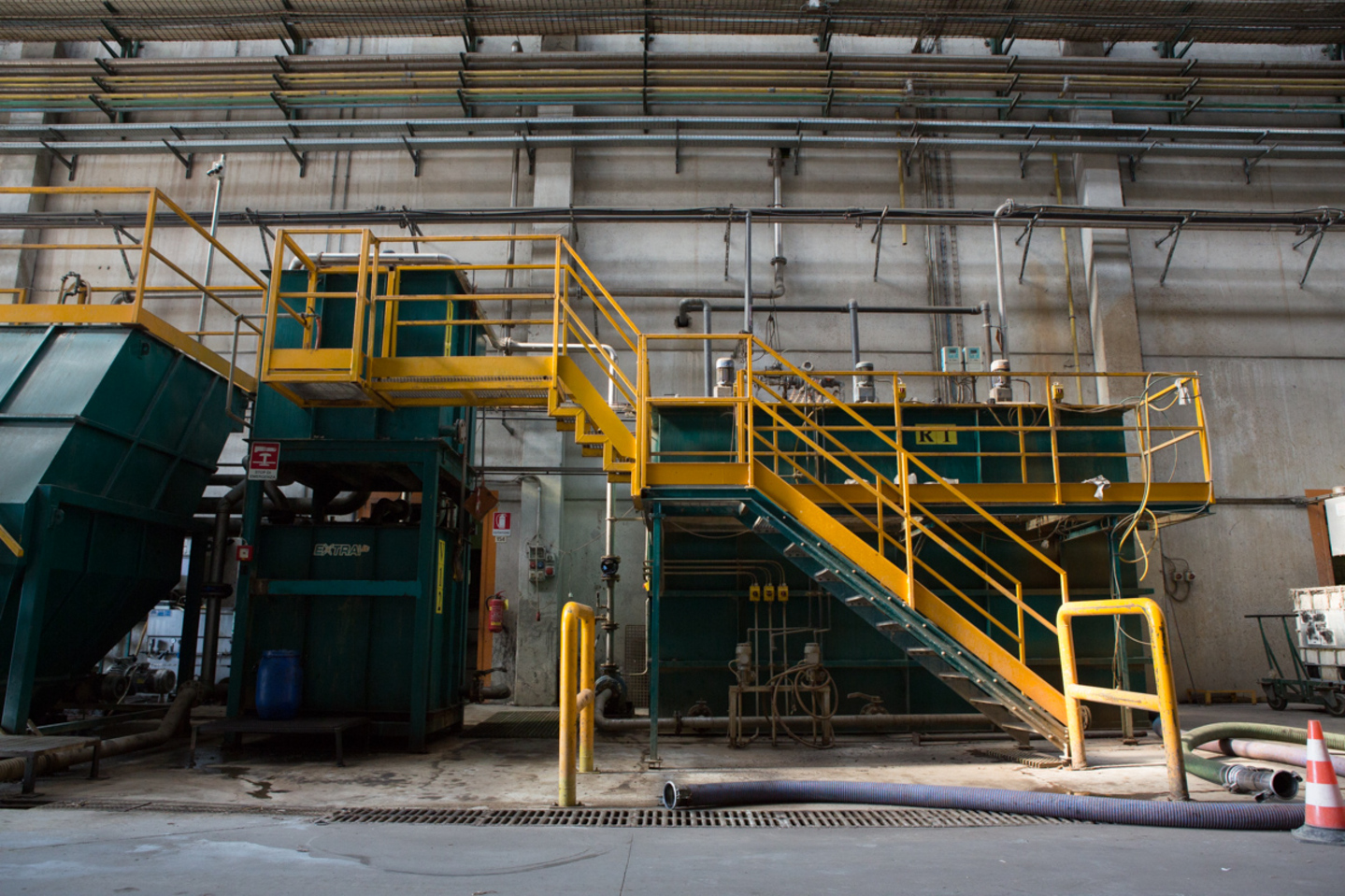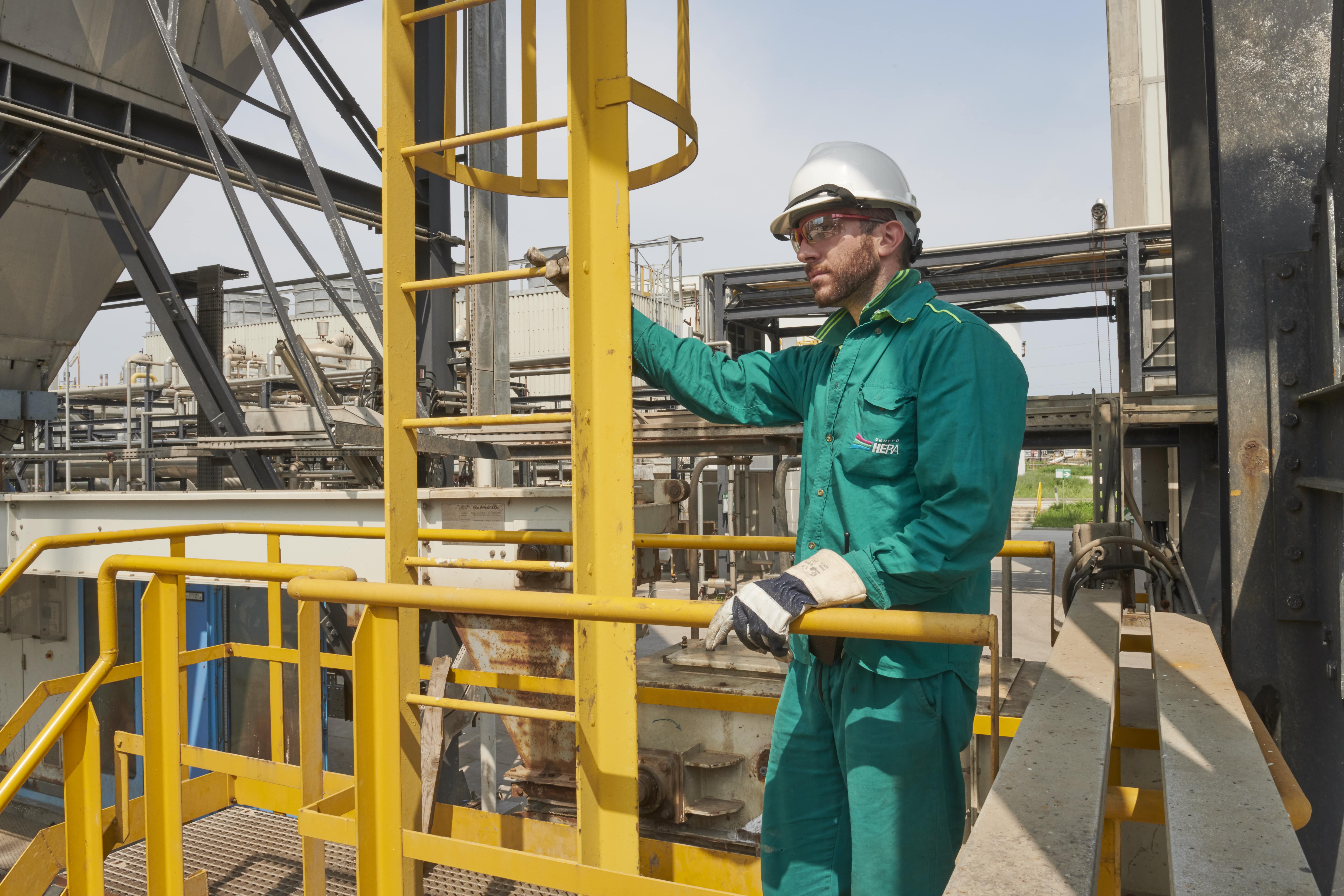Overview
The plant is located in Via Ragghianti 12 – Ospedaletto, Pisa. It treats hazardous and non hazardous liquid waste and is divided into three sections: chemical physical treatment, biological treatment; acid neutralisation. Including with the acid neutralisation section, the plant can treat up to 110,000 t/year of waste.
Page update 5 December 2022
The waste to be treated is stored in two 200 m3 tanks, 12 tanks of 60 m3 each and 3 tanks of 100 m3 each. These tanks can also be used for the storage of waste destined for treatment in external plants. The sludge with a liquid consistency can be stored in two special tanks with a conical bottom from which it is sent to a centrifuge with a filter press for dewatering or alternatively to a soil-washing plant. From the temporary storage tanks, where initial equalisation takes place, they are transferred to the two equalisation tanks (65 m3 each), which are sealed at the top and are placed under suction. The two tanks are connected, for a total volume of 130 m3.
Clariflocculation takes place in this section with flocculating and complexing agents for heavy metals and precipitation in a lamellar settling tank through the addition of a polyelectrolyte. Clarified wastewater is fed back to the biological treatment section. The resulting sludge is thickened and subsequently dewatered by means of a filter press/centrifuge. The plant consists of two lines, a continuous and a batch line (authorised and under construction). The continuous line has a treatment capacity of 25 m3/h, while the batch line consists of 4 70 m3 batch reactors and can either treat waste in parallel with the continuous line or pre-treat waste to be sent to the continuous line.
The neutralisation section can be used independently of the chemical-physical plant and has a capacity ranging between 10,000 and 15,000 t/year. In this section, consisting of a 5 m3 stirred reactor, the neutralisation of acidic (pH < 1) or alkaline solutions takes place by feeding the neutralising agent (raw material or waste from recovery) at a low flow rate. Neutralised solutions are transferred to sludge thickeners or to the storage facility of the chemical-physical treatment section. Sludge dewatered by filter press/centrifuge or pumpable liquid waste (if not dewatered) is sent, depending on the characteristics, to internal inerting treatment or to treatment/disposal centres. Clarified material may be sent to the chemical-physical treatment section, to the biological treatment section or for disposal.
The plant consists of a three-stage vacuum evaporator, a scraped-surface evaporator, a boiler and a set of tanks. The waste to be treated consists of the saline water produced by the osmosis plant of the SBR biological section and the stored liquid waste delivered by third parties. A distillate and a concentrate are obtained from the treatment. The condensed liquid (distillate) is sent to the biological plant while the concentrate is stored for subsequent treatment in the scraped-surface evaporator. From the latter, the separated water flows into the tanks to the chemical-physical-biological plant, while the separated salts are deposited in a box to be subsequently sent for disposal at external plants or internal plants at the platform.
The plant has a treatment capacity of 110,000 t/year, and is used partly for the treatment of waste from third parties and partly for the treatment of wastewater from the various sections of the plant.
Effluent from the storage tanks dedicated to pre-treatment (chemical-physical treatment, neutralisation) is sent to an initial equalisation tank upstream of the aerobic biological treatment section and then transferred to the SBR (sequencing batch reactor) aerobic biological treatment tank.
SBR treatment consists of a five-stage cycle: filling, reaction, sedimentation, removal of clarified material or discharge and rest. At the end of the biological treatment, the wastewater is conveyed to the finishing unit, consisting of filtration on sand filters, microfiltration, reverse osmosis and ion exchange resins for boron removal. Treated and filtered water is transferred to dedicated tanks for analytical testing and from there it is sent to a storage facility to be reused in the plant as washing or process water for an average amount of about 20,000 m3/year. Excess water is discharged into the public sewerage. The sludge is sent to the thickeners of the plant
Effluent from the storage tanks dedicated to pre-treatment (chemical-physical treatment, neutralisation) is sent to an initial equalisation tank upstream of the aerobic biological treatment section and then transferred to the SBR (sequencing batch reactor) aerobic biological treatment tank.
SBR treatment consists of a five-stage cycle: filling, reaction, sedimentation, removal of clarified material or discharge and rest. At the end of the biological treatment, the wastewater is conveyed to the finishing unit, consisting of filtration on sand filters, microfiltration, reverse osmosis and ion exchange resins for boron removal. Treated and filtered water is transferred to dedicated tanks for analytical testing and from there it is sent to a storage facility to be reused in the plant as washing or process water for an average amount of about 20,000 m3/year. Excess water is discharged into the public sewerage. The sludge is sent to the thickeners of the plant

